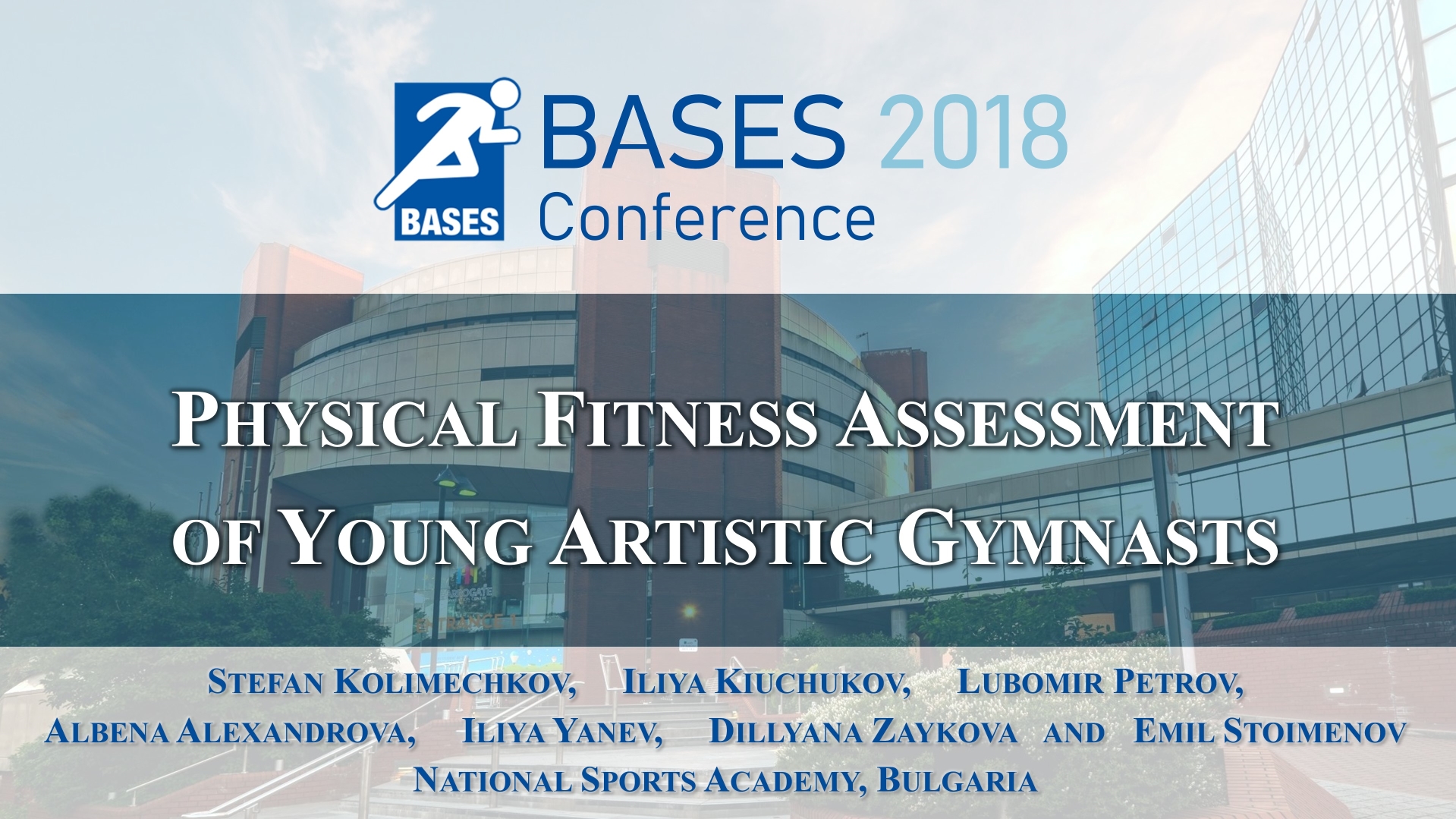BASES Conference 2018

BASES Conference 2018
Annual Conference of the British Association of Sport and Exercise Sciences (BASES)
 United Kingdom, Harrogate, Harrogate Convention Centre
United Kingdom, Harrogate, Harrogate Convention Centre
Video format: MP4 | watch on YouTube
ABOUT THE CONFERENCE
The BASES conference is the flagship event of the British Association of Sport and Exercise Sciences (BASES). This year the BASES Conference was held on 27 and 28 November 2018 at the Harrogate Convention Centre in Harrogate, UK, with a total of 329 delegates attending the event.
OUR CONTRIBUTION
At this conference I presented preliminary findings from our study on physical fitness of young artistic gymnasts, which is part of the following project: Assessment of the Physical Development in Bulgarian Artistic Gymnasts, won by my colleagues and I, and funded by Grant ‘08/15.02.2018’ from the National Sports Academy, Sofia, Bulgaria. Our presentation was part of the 5 slides in 5 minutes Free communication sessions at the BASES Conference in Harrogate. The abstract is available in the supplement of the Journal of Sports Sciences published in 2018. After the Conference, our study was built upon further and the complete findings were published in the Science of Gymnastics Journal, Vol.11, 2019.
Physical fitness assessment of young artistic gymnasts
5 Slides in 5 Minutes Free Communication Session
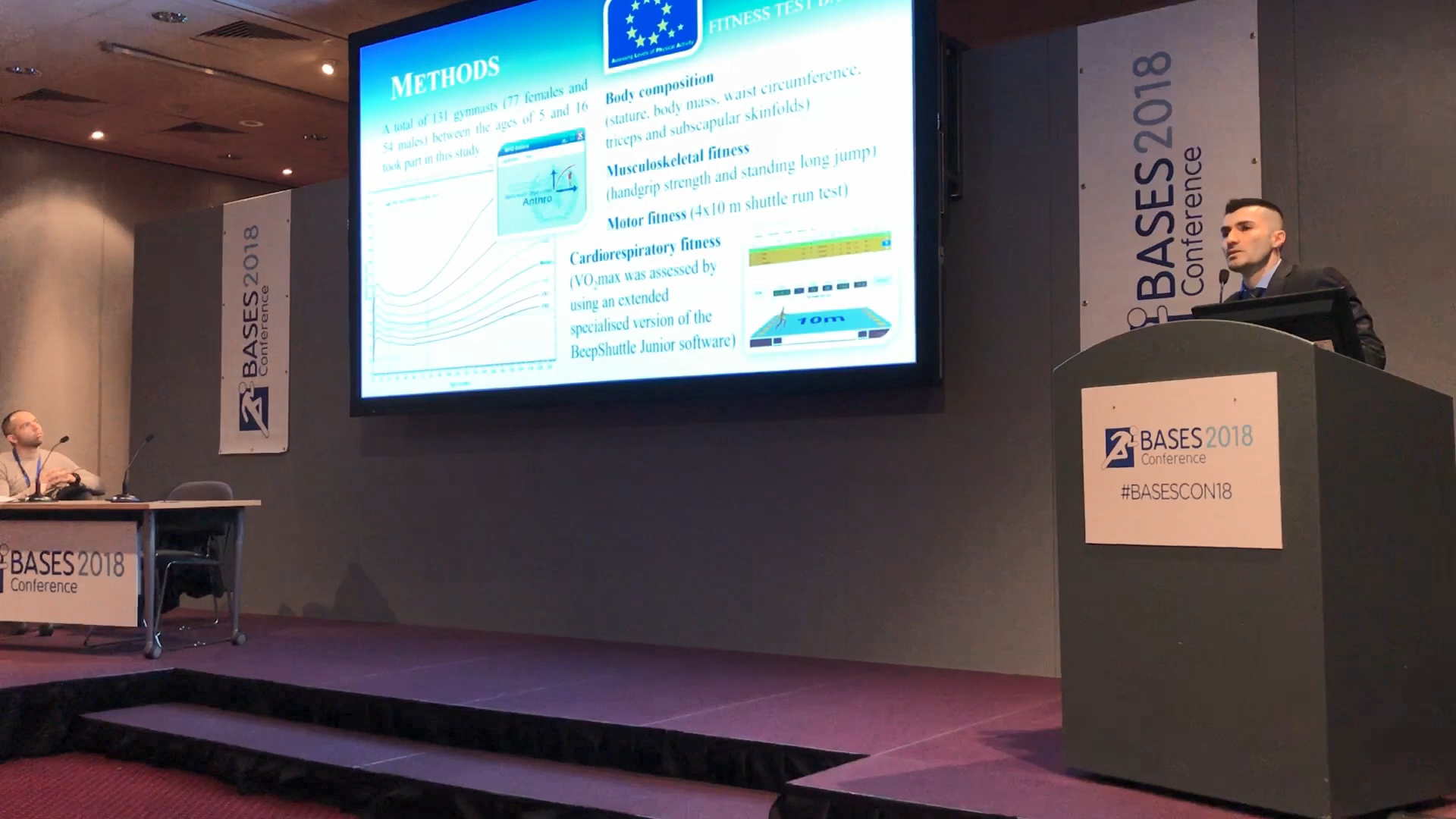
BASES Conference 2018
Annual Conference of the British Association of Sport and Exercise Sciences
PHYSICAL FITNESS ASSESSMENT OF YOUNG ARTISTIC GYMNASTS
Stefan Kolimechkov, Iliya Kiuchukov, Lubomir Petrov, Albena Alexandrova, Iliya Yanev, Dillyana Zaykova & Emil Stoimenov
National Sports Academy, Sofia, Bulgaria
ABSTRACT
INTRODUCTION:
Artistic gymnastics is one of the few sports which can be practised from early primary school age, and which develops all components of physical fitness. The aim of this study was to assess the physical fitness qualities of young competitive artistic gymnasts from different regions in Bulgaria.
METHODS:
A total of 131 gymnasts (77 females and 54 males) between the ages of 5 and 16, and with an average sports experience of 29.5 months (from 12 to 120 months), took part in this study. With institutional ethics approval, participants completed the Alpha-Fit physical fitness test battery: body composition (stature, body mass, waist circumference, triceps and subscapular skinfolds), musculoskeletal fitness (handgrip strength and standing long jump), cardiorespiratory fitness (VO2max was calculated from the 20 m multistage fitness test results by using Leger’s equations for children and adolescents), and motor fitness (4x10 m shuttle run test). Additionally, BMI and body fat percentage were also calculated. WHO Anthro+ software was used to compute the percentile scores (PRs) of stature, body mass and BMI. European physical fitness norms were applied to calculate PRs scores for each fitness test.
RESULTS:
Results showed that gymnasts were slightly shorter in stature (PRs 41.1 ± 28.5, which significantly differ from the 50th PRs of children of the same age and sex (P = 0.005)), but Cohen’s effect size value suggested a small practical significance (d=0.31). The gymnasts’ body mass (PRs 51.5 ± 26.5) and BMI (PRs 53.9 ± 25.6) did not differ significantly from their peers. The BMI assessment suggested that 12 gymnasts were overweight (PRs > 85), and 3 were obese (PRs > 97). However, gymnasts showed substantially lower body fat (PRs 16.8 ± 23.1), significantly different from the 50th percentile (P < 0.0001), with very large practical significance (d=1.44), with only 1 gymnast assessed as overweight, and 2 obese. Surprisingly, the handgrip strength PRs score, being only 30.47 ± 26.28, differed from the 50th percentile (P < 0.0001, d=0.74). PRs scores for the VO2max (64.8 ± 22.1) and 4x10 m shuttle run test (66.7 ± 23.9) were significantly higher (P < 0.0001) than the 50th percentile with medium effect size (d=0.66 and d=0.70, respectively). The standing long jump PRs score (87.6 ± 15.7) was also higher than the 50th percentile (P < 0.0001), effect size d=2.40.
CONCLUSION:
The results showed that, although practising an anaerobic sport, gymnasts had better physical fitness, including higher aerobic capacity, compared with their peers.
Presenting Author: Dr Stefan Kolimechkov
Date & time: 28 November 2018, 9:00-9:50 am
5 Slides in 5 Minutes Free Communication Session, Harrogate Convention Centre, Queen’s Suite
Chair: Professor Craig Twist PhD FBASES
Session-ID: D2.S1.5 Sport and Performance
Abstract-ID: D2.S1.5(5)
GALLERY, BASES Conference 2018
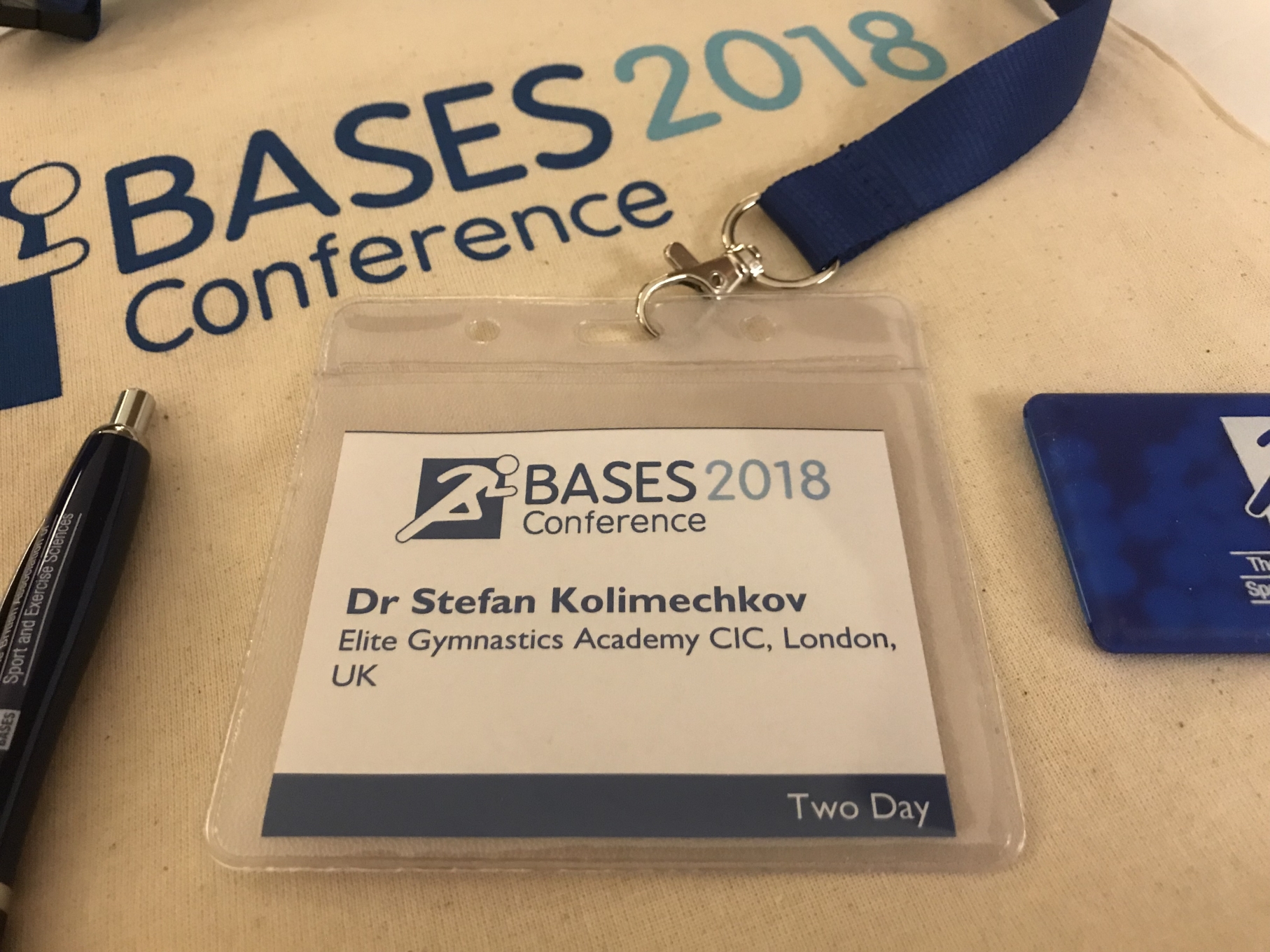
Dr Stefan Kolimechkov (Elite Gymnastics Academy CIC London) at the BASES Conference 2018.

This is the Harrogate Convention Centre, the official venue of the BASES Conference 2018.
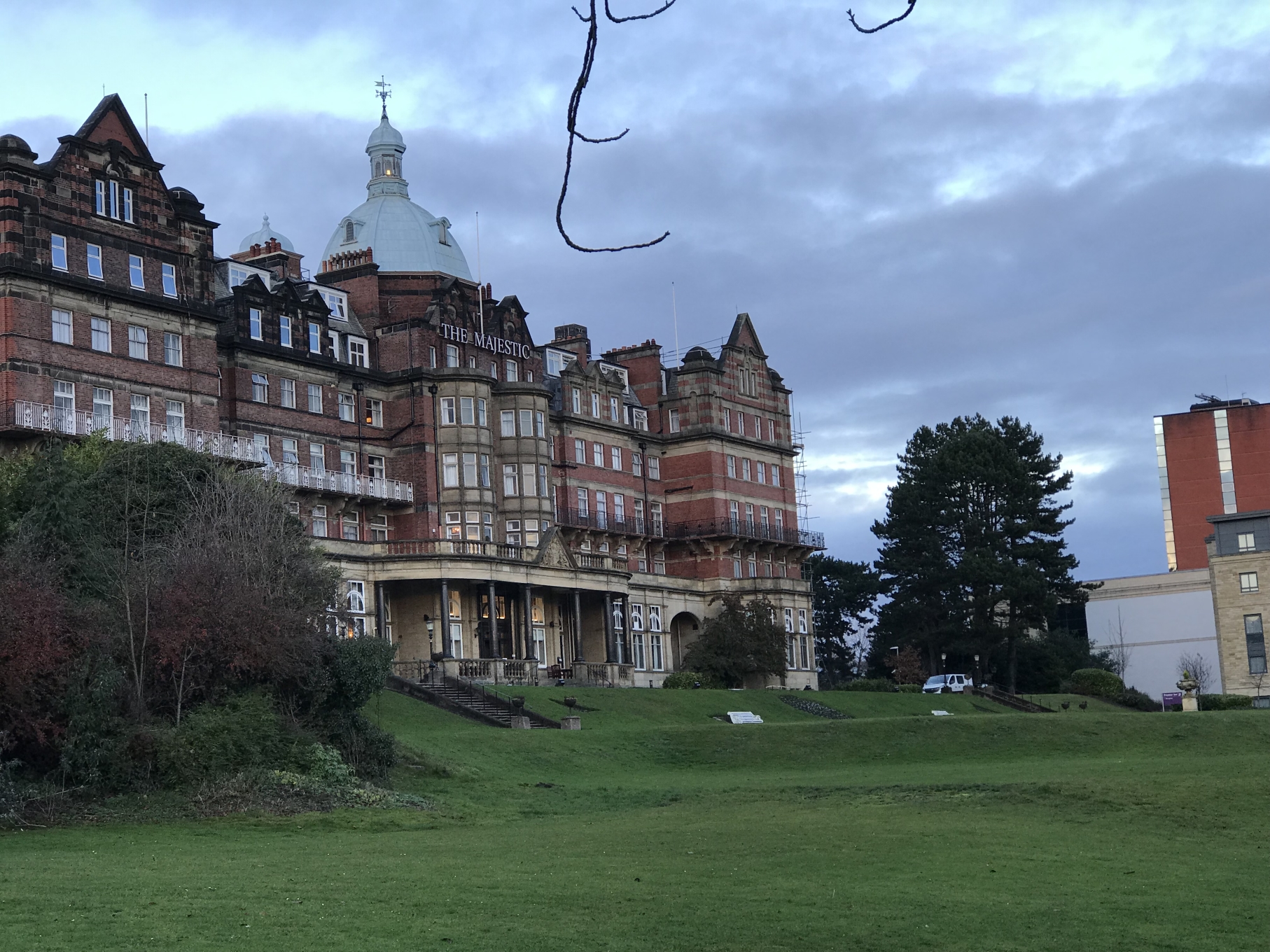
The Majestic Hotel in Harrogate was the Official hotel for the BASES Conference 2018.
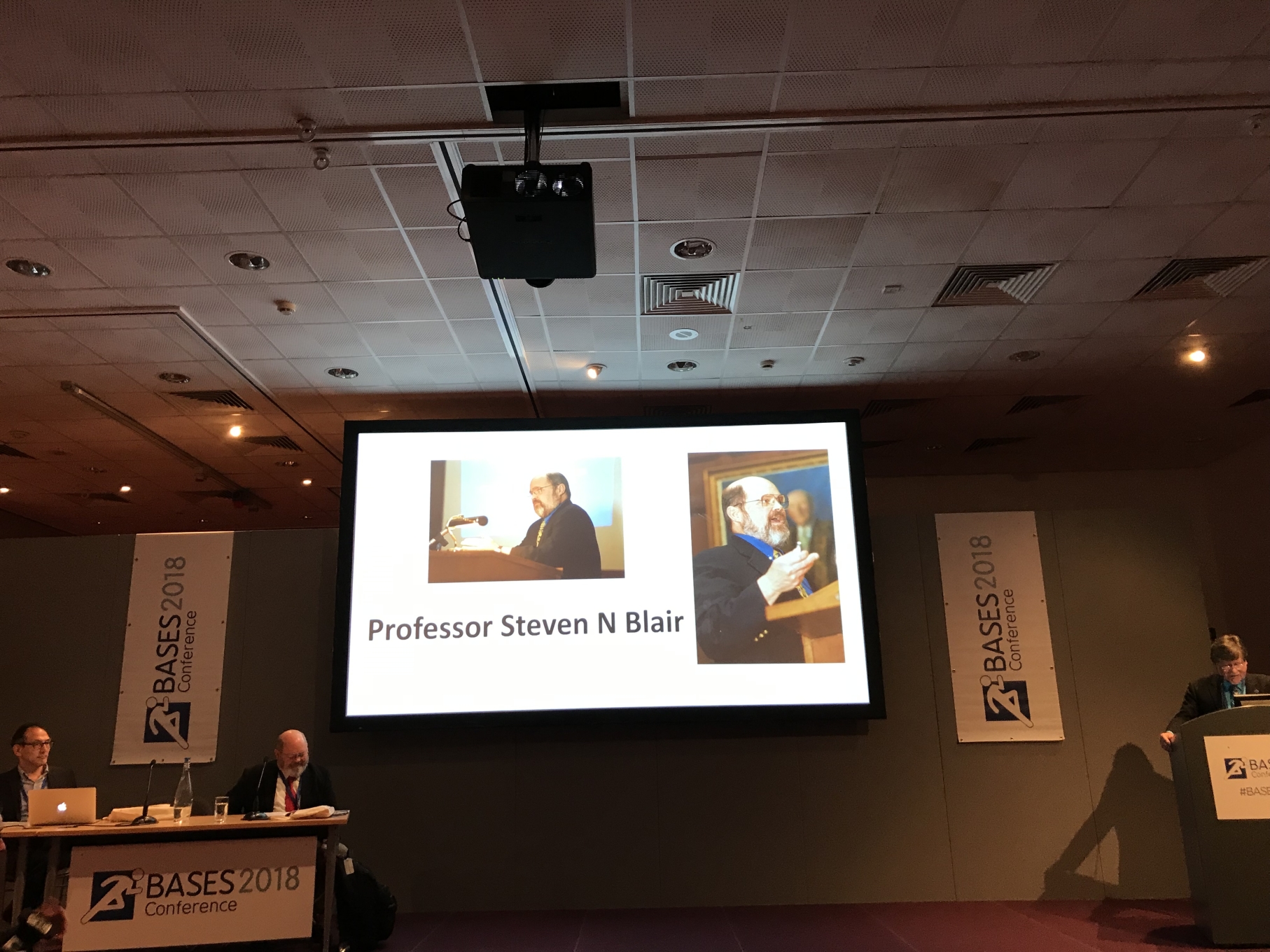
Professor Steven Blair (USA) spoke at the BASES Conference 2018.
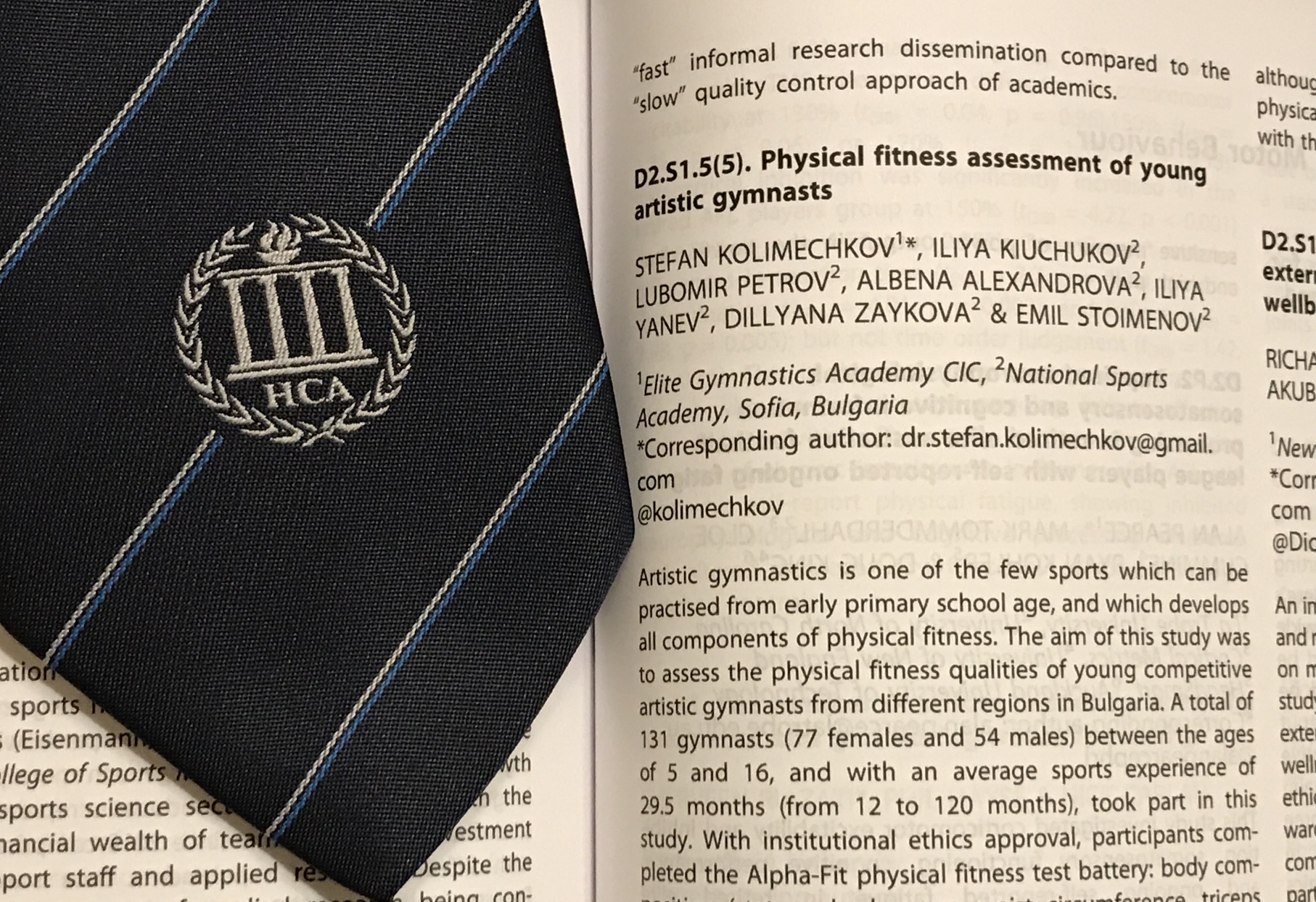
Our abstract is available in the supplement of the Journal of Sports Sciences published in 2018.
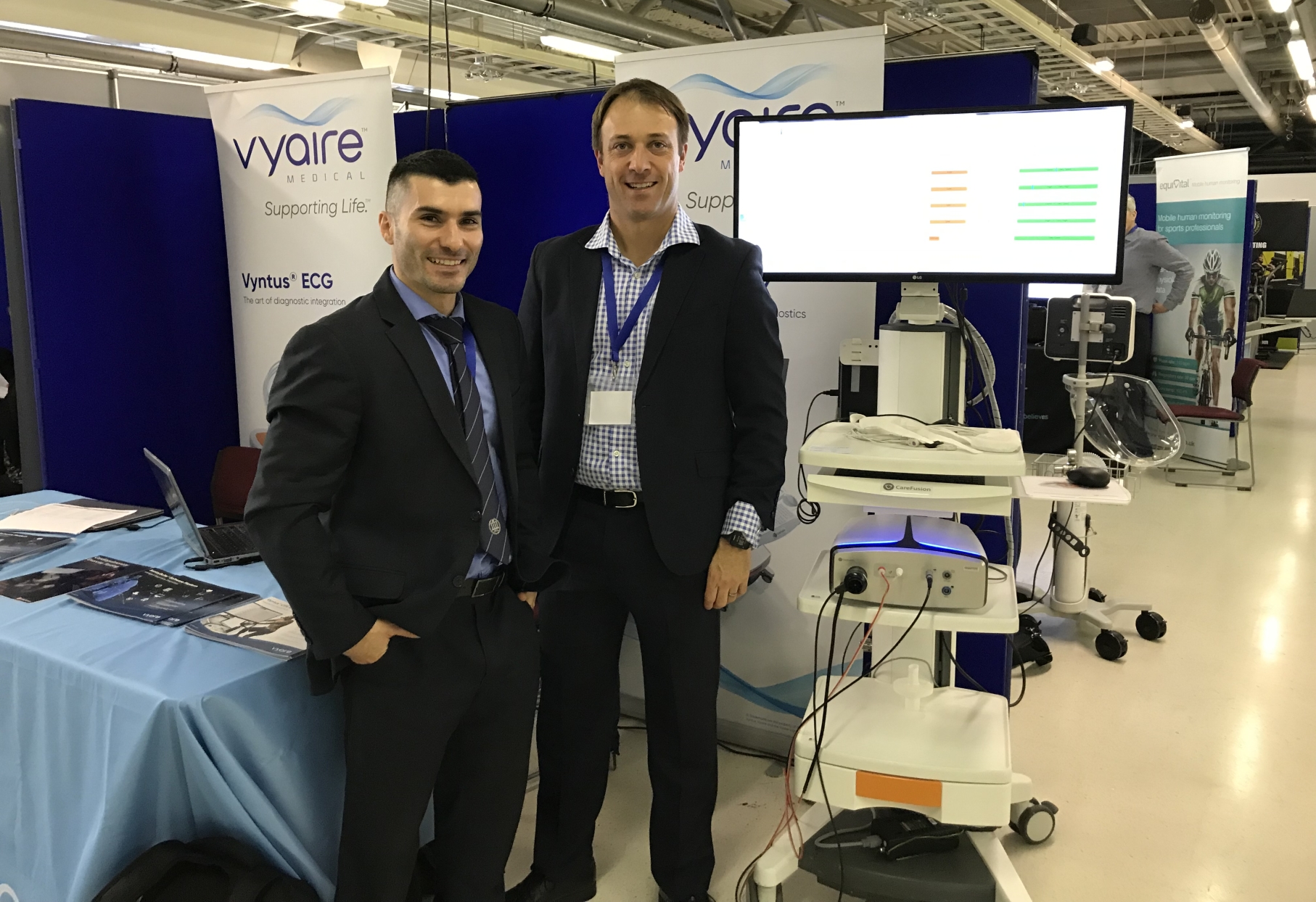
And here I am exploring advanced technologies in sport and exercise science at the BASES Conference 2018.
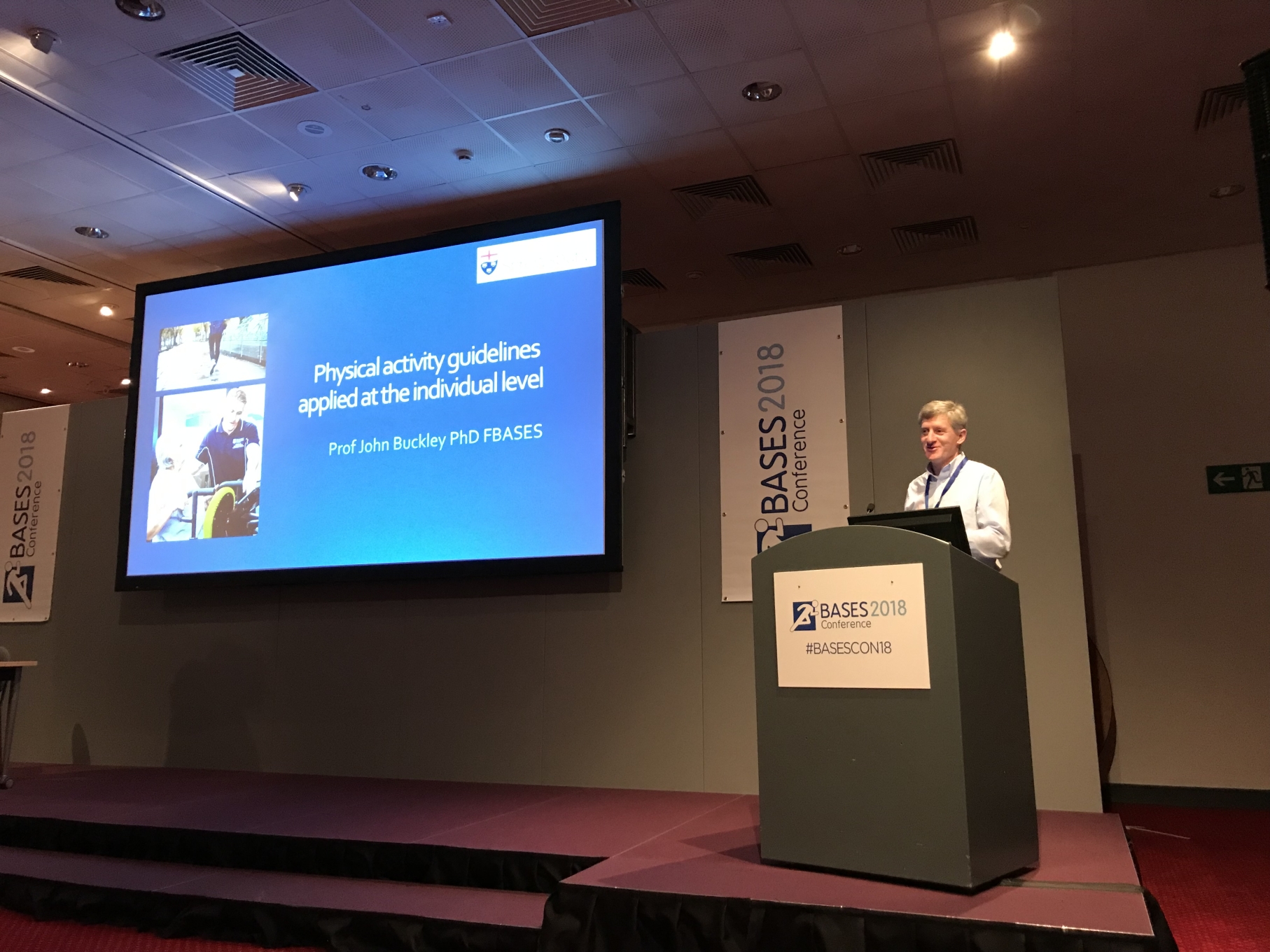
Prof. John Buckley PhD presenting the physical activity guidelines at the BASES Conference 2018.
How to cite this study:
After the 2018 BASES Conference in Harrogate, our study was built upon further and the complete findings were published in the Science of Gymnastics Journal, Vol.11, issue 2, 2019, so you can cite the article in this journal as follows:
Kiuchukov, I., Yanev, I., Petrov, L., Kolimechkov, S., Alexandrova, A., Zaykova, D., & Stoimenov, E. (2019). Impact of gymnastics training on the health-related physical fitness of young female and male artistic gymnasts. Science of Gymnastics Journal, 11(2), 175 - 187.
